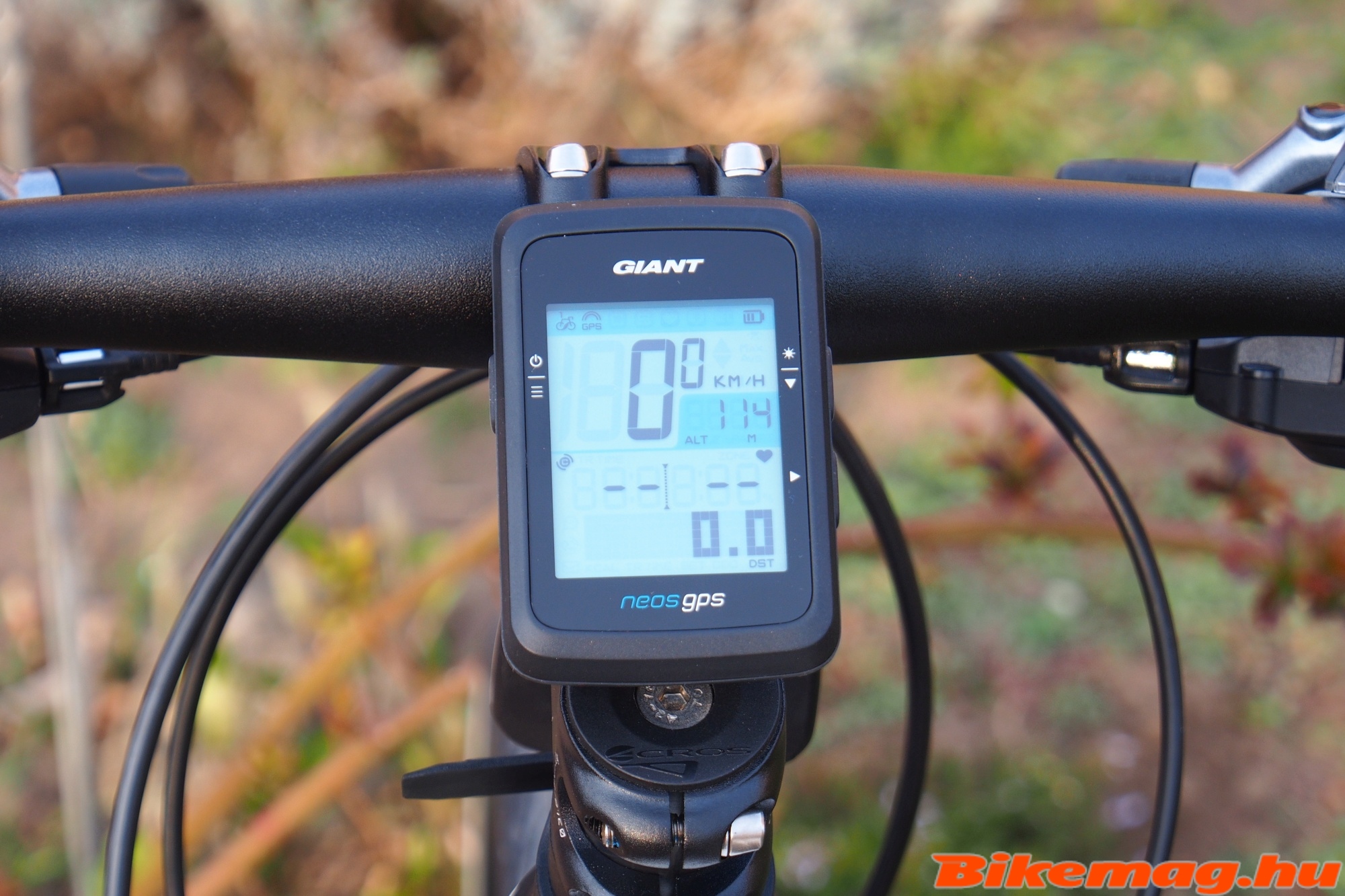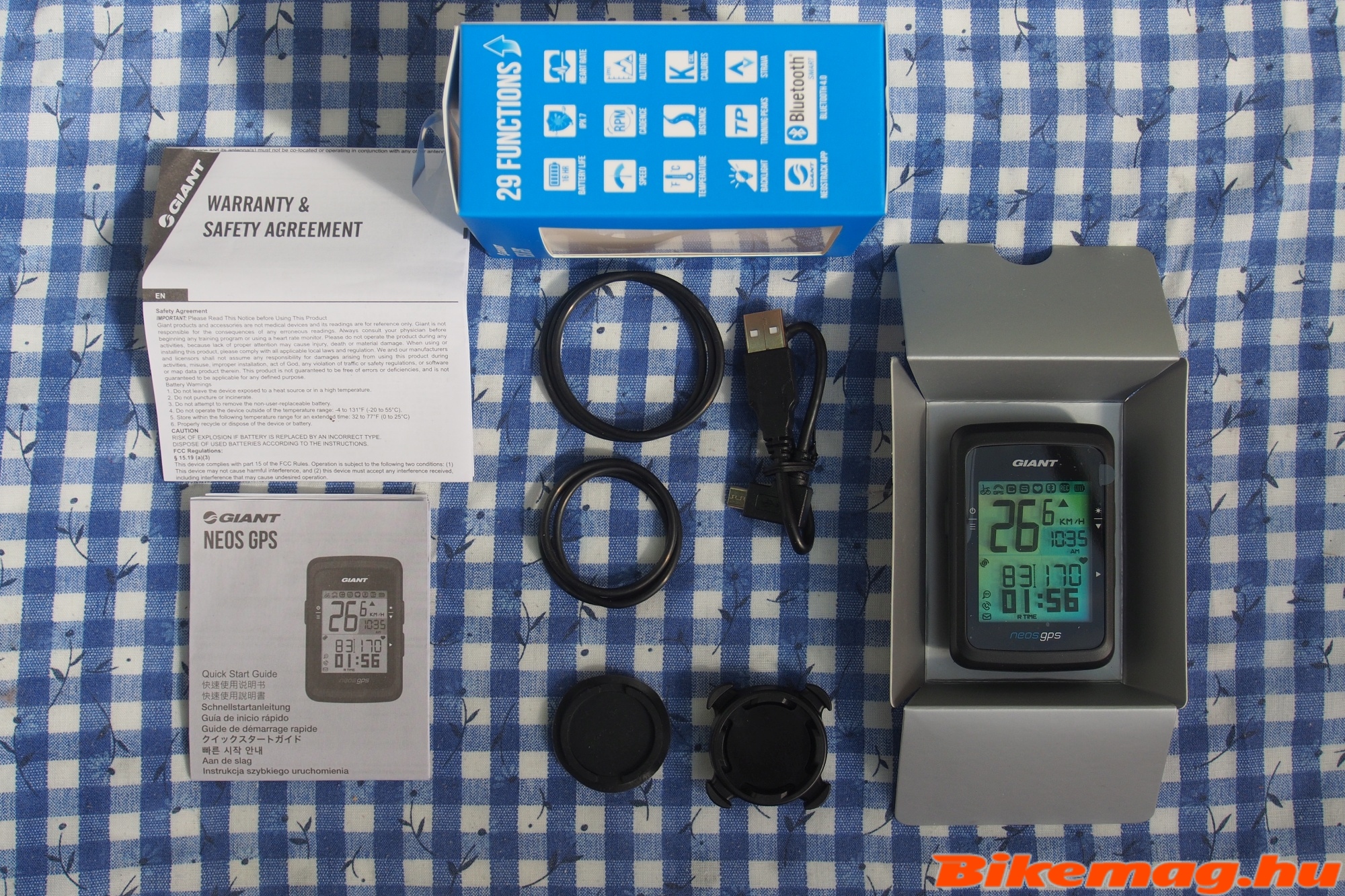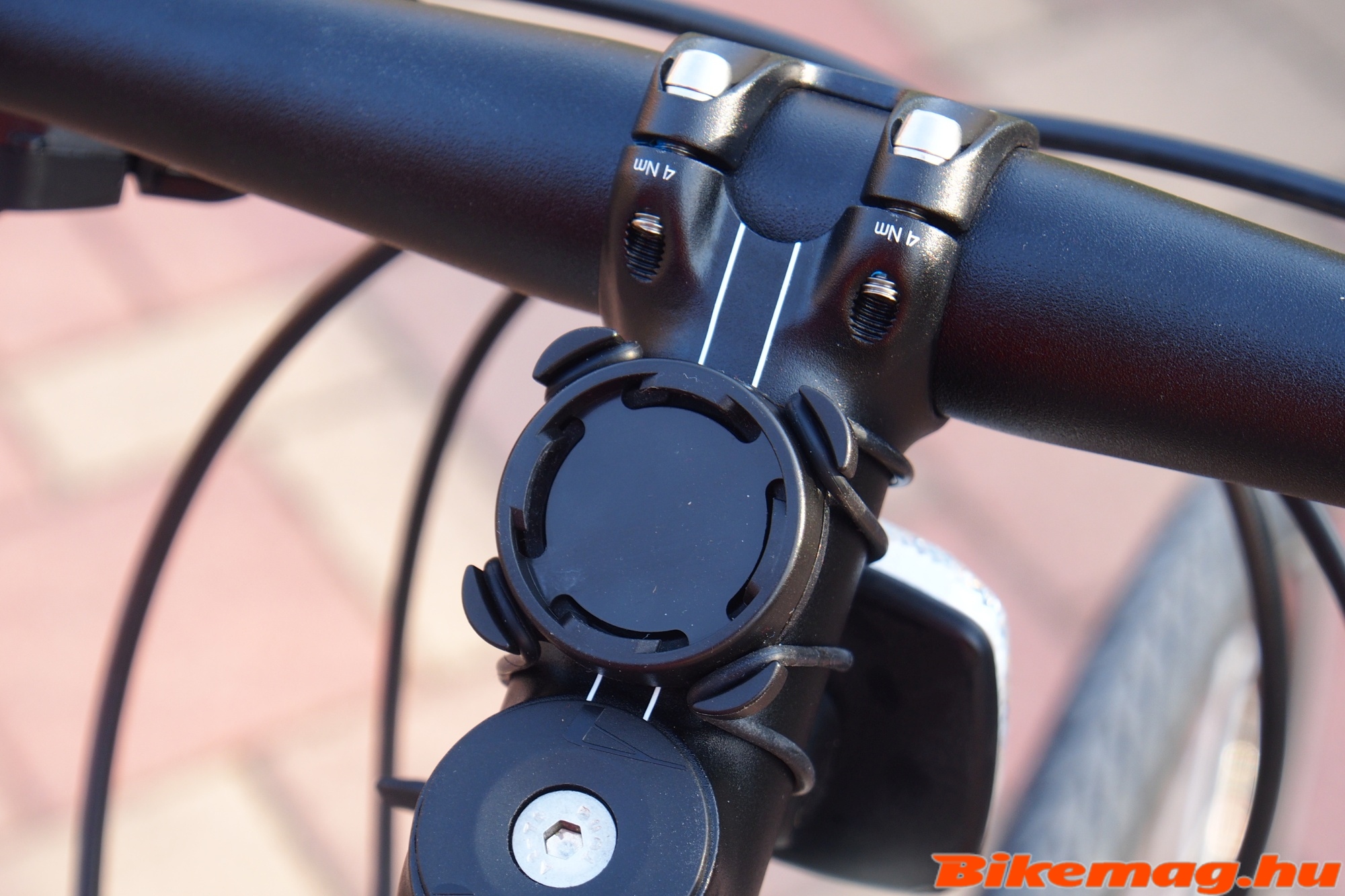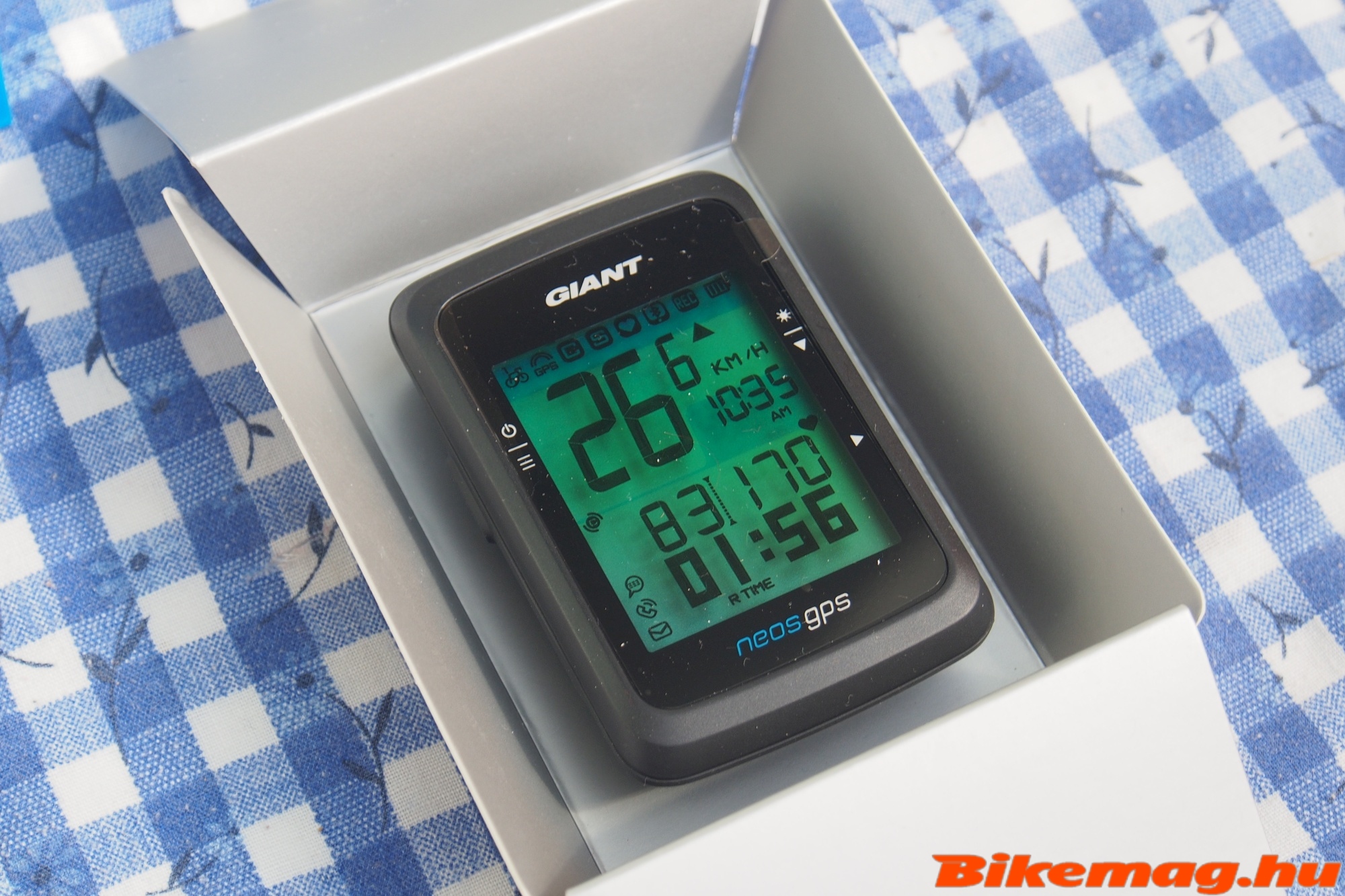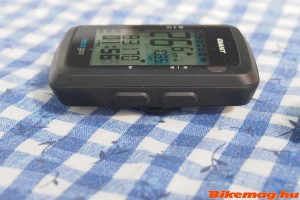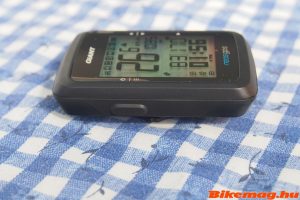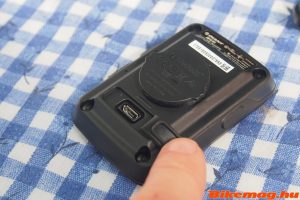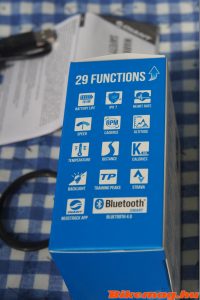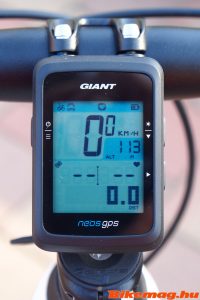Cycling cannot avoid the wide-spread use of gadget in our everyday life. This trend defines our era. There are many who enjoy the benefits provided by the technology, the abundance of detailed information regarding the ride, others are satisfied with basic data that they can easily interpret. Giant’s new GPS-based bike computer manages to satisfy both crowds: the NeosGPS is easy to use, the amount of data available can be tailored to the needs of the rider, while there is plenty of “reserve” to be conjured from the microprocessor.
Opening the NeosGPS’s packaging we find a relatively large device with a 2” LCD display, along with all the accessories needed for attaching the unit to various places on the handlebar. There is an USB charging cable, an instruction manual and the warranty papers are supplemented by a quick activation guide. This would be the ideal point to sever this review into two sections: one for the novice, who needs basic information from this bike computer, and the experienced cyclist following a training schedule. We’ll mostly concentrate on the former, for the rest of the readers I’d recommend downloading the detailed instruction manual which lists all the functions and possibilities offered by the NeosGPS.
So this review is intended for those who who’d just like to enjoy their time on the bike while getting some feedback on the parameters of the ride. If you’re this person, all you have to do is click the unit into the bracket and receive data without sophisticated setup procedures or press any buttons on the unit.
Nevertheless, there is still an initial setup that has to be carried out in order to use the NeosGPS. Before making the very first ride, the device has to be connected to a computer in order to charge up the integrated battery. The manufacturer promises 16 hours of operation for a single charge, which can be regarded as quite good. The second step is to install the Giant NeosTrack app onto our smart phone (available for both Android and iOS platforms), then the NeosGPS needs to be paired with the phone using Bluetooth 4.0 connection. This Bluetooth Low Energy communication is also employed when connecting other devices to the NeosGPS, such as a heart rate strap or a cadence sensor. Once we’re done with the pairing, it’s a good idea to update the firmware, and provide the user information.
The seamlessly legible display contains 5 pieces of data at one time, and 4 further screens can be accessed based on our needs. This is done using the “custom page” function in the menu. All the information provided by the unit is well-differentiated in logical groups. Actual speed is the largest is size, complemented by such essential information like average and maximum speed. The barometric altitude measurement is displayed over the blue background. Within this data group we find altitude gain or loss (in distance as well as a percentage), and the thermometer. In the field below, we receive information coming from the optional external sensors, like heart rate and cadence. At the bottom is the ride distance, the calories expanded and all its data variants. At the very top there are some self-intuitive icons regarding signal, the status of the connection, which also lets the rider know of any incoming messages or calls from the phone.
Once done with the initial setup, we can choose which bike we’re to ride. Yes, the unit can handle two bikes with individual custom settings for each. Finally we’re ready to ride! If the device is on the move, we’re asked if we’d like to record the ride data. By selecting “record”, we’ll be able to track our route in detail once we’re arrived back home. There are also myriads of possibilities to analyze the vast amount of data related to the ride. The latter can of course be uploaded to Strava or Training Peaks, opening a whole new dimension to training and performance analysis, as well as tracking long-term trends. The collected data can also be accessed while riding for on-the-spot assessment.
According to my observations the speed display is relatively accurate: there is very little difference when compared to a conventional bike computer with a wheel-based sensor. So it’s safe to say that the GPS tracking built into the device is precise. If the rider wants to make full use of the barometric altitude measurement, there is a finicky setup procedure to be dealt with before the ride. Fortunately this can be carried out on the phone as well as the device. I haven’t yet mentioned the buttons on the NeosGPS: there are three large rubberized controls on the side making navigating in the menu quite easy. Operating the device in gloves is not a problem. The designers made serious steps to protect the unit: it has an IPX7 rating for water resistance making it absolutely reliable in wet conditions.
Attentive readers might notice some similarity between the Giant NeosGPS and those offered under the Bryton brand name. Little wonder, as the Bryton manufactures this unit according to Giant’s design. There are just as many difference as similarities, especially if we consider the ergonomics and software running inside the NeosGPS. Concerning value for money, this bike computer model is in line with those offered by Bryton, and both offer a higher level of return for your hard earned cash than models from competing brands.
If the functions offered by the NeosGPS is not sufficient for your needs, you can find a more sophisticated model from Giant called NeosTrack. We’ve posted a review of this device (in English as well as Hungarian), and it’s one of our all-time favorite GPS bike computers.
The Giant devices mentioned are available from Progress Cycle, the recommended retail price of the NeosGPS in this test is HUF 24,990.
https://www.giant-bicycles.com/hu/giant-neos-gps-computer


